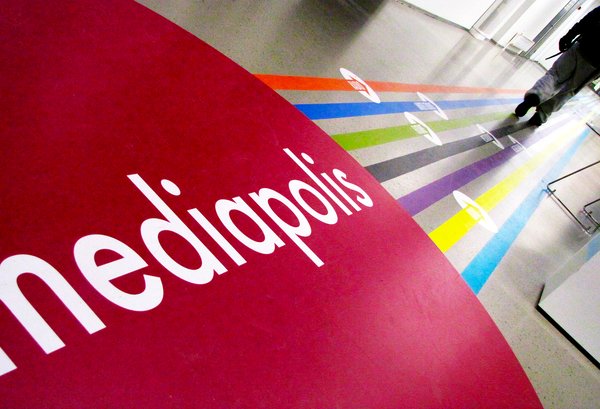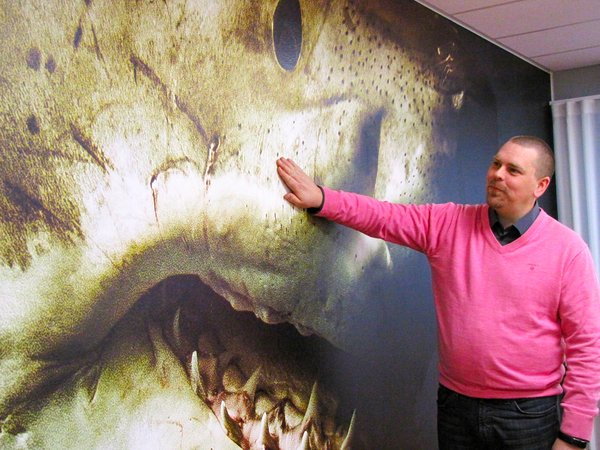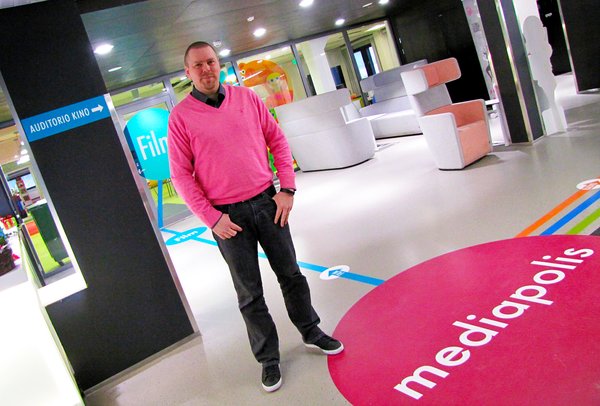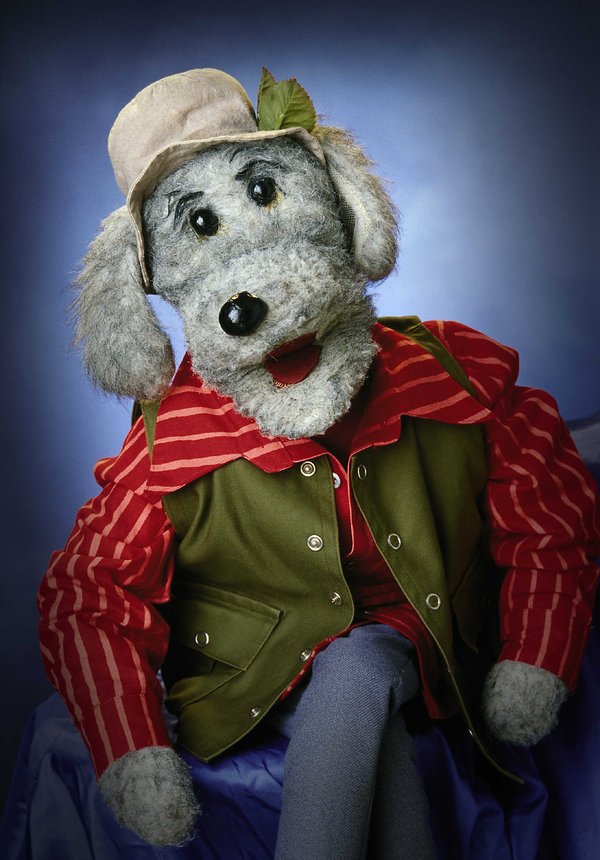Mediapolis Tampere tells new stories
8.1.2015
Mediapolis in Tampere is undergoing an interesting transformation. From a public service broadcaster's TV centre, it is being changed into a centre for storytelling and digital industry, whose doors are open to everyone interested in the field.
– Where is Ransu?
This is one of the most frequently heard questions from visitors to Mediapolis. It's no wonder: the canine character, known as a "medium-sized video retriever", has delighted the audience of children's programmes made at Mediapolis for decades. In addition to Yle's TV production, Mediapolis is nowadays a setting for students, companies and events. Around a thousand people work there, and every day there are scores if not hundreds of visitors.
Finns have known the location as Yleisradio's TV centre and as the long-time home of the Yle TV2 channel. Yle sold the property to Technopolis in 2012, but continued to lease some of it back for its own use, as one company among others.
– We now have a network of 17 different actors. It is still growing, and we have room for this growth, says Jan Kolkkinen, development director of the Mediapolis project.

Mediapolis has been named as a centre for storytelling and digital industry. Storytelling arises naturally from the location's history as a TV centre. The transformation to Mediapolis will open up the facilities of TV production for all storytellers.
– The Mediapolis studios, for instance, will become available for everyone outside their normal use. We can supply customers with all the production services they need, from filming of TV programmes or movies to arranging events, says Kolkkinen.
"Digital industry" was the term that emerged from coffee-table talk, when an expression was sought for the direction in which Mediapolis is moving as a whole. Digital industry is born when expertise in storytelling and visuality is combined with a suitable amount of information and communications technology; interaction between humans and technology; gamification; and so on.
According to Kolkkinen, the strength of Mediapolis is in the fact that the campus gathers together the representatives of all required fields – for brainstorming over coffee, for instance. Here is one example:
– Motion capture emerged as a topic a year ago. We gathered together everyone who had been talking about it and expressing an interest in it. We are now finding out if we could create Finland's first motion capture studio here. There is also a multidisciplinary research project under way on the subject.

Product development, experiments and demos are things that the Mediapolis campus wants to see a lot of in the future. As an example, Kolkkinen names the transmedia pilot project started last August, involving students and technology companies. The main platform is the basement of Mediapolis, where you can move instantly from a space built as a 1960s shop to futuristic underground passageways.
– In the pilot, we try to combine storytelling and technology. The most important thing is to do something together and learn from this. We are not content to just present transparencies on what we could do if…
Experiments are needed. The media field is in transition: technology is changing the ways and structures of creation, distribution and consumption. It is hard to forecast even the near future.
– The situation is rather democratic. In principle, anyone has the chance to make an international breakthrough. Tampere for one has what it takes. We have technology companies; post-Nokia expertise; start-ups; skills in storytelling; and Mediapolis as a centre for the digital industry.

But what about Ransu, so beloved by visitors? He is having an active retirement in Pirkkala with his personal assistant Pertti Nättilä. Children's programmes, however, are still being made by Yle at Mediapolis.
– Pikku Kakkonen will be produced for the children of the future too, but it can be accessed through many different media nowadays, says Kolkkinen.
Transalation: Lingoneer